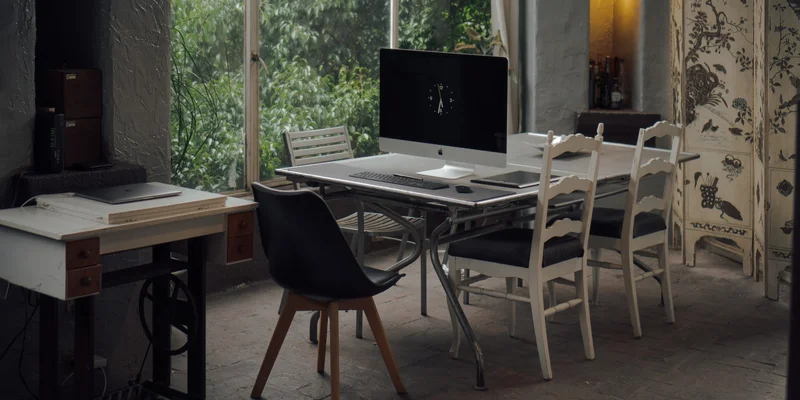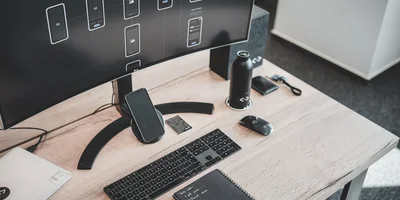Styling checkboxes and radio buttons

One of the most common pain points in web development is styling checkboxes and radio buttons. They are notoriously difficult to style consistently across browsers and platforms. However, with a little CSS magic, you can create custom checkboxes and radio buttons that look great and are easy to use.
Custom checkboxes
For a custom checkbox, the best solution I've found is to use an <svg> element to create the checkmark symbol and insert it via the <use> element to create a reusable SVG icon.
You can then create a container and use flexbox to create the appropriate layout for the checkboxes. Hide the <input> element and use the <label> associated with it to display a checkbox and the provided text.
Then, using stroke-dashoffset, you can animate the check symbol on state change. Finally, use transform: scale(0.9) via a CSS animation to create a zoom animation effect.
<svg class="checkbox-symbol">
<symbol id="check" viewbox="0 0 12 10">
<polyline
points="1.5 6 4.5 9 10.5 1"
stroke-linecap="round"
stroke-linejoin="round"
stroke-width="2"
></polyline>
</symbol>
</svg>
<div class="checkbox-container">
<input class="checkbox-input" id="apples" type="checkbox" />
<label class="checkbox" for="apples">
<span>
<svg width="12px" height="10px">
<use xlink:href="#check"></use>
</svg>
</span>
<span>Apples</span>
</label>
<input class="checkbox-input" id="oranges" type="checkbox" />
<label class="checkbox" for="oranges">
<span>
<svg width="12px" height="10px">
<use xlink:href="#check"></use>
</svg>
</span>
<span>Oranges</span>
</label>
</div>.checkbox-symbol {
position: absolute;
width: 0;
height: 0;
pointer-events: none;
user-select: none;
}
.checkbox-container {
box-sizing: border-box;
background: #ffffff;
color: #222;
height: 64px;
display: flex;
justify-content: center;
align-items: center;
flex-flow: row wrap;
}
.checkbox-container * {
box-sizing: border-box;
}
.checkbox-input {
position: absolute;
visibility: hidden;
}
.checkbox {
user-select: none;
cursor: pointer;
padding: 6px 8px;
border-radius: 6px;
overflow: hidden;
transition: all 0.3s ease;
display: flex;
}
.checkbox:not(:last-child) {
margin-right: 6px;
}
.checkbox:hover {
background: rgba(0, 119, 255, 0.06);
}
.checkbox span {
vertical-align: middle;
transform: translate3d(0, 0, 0);
}
.checkbox span:first-child {
position: relative;
flex: 0 0 18px;
width: 18px;
height: 18px;
border-radius: 4px;
transform: scale(1);
border: 1px solid #cccfdb;
transition: all 0.3s ease;
}
.checkbox span:first-child svg {
position: absolute;
top: 3px;
left: 2px;
fill: none;
stroke: #fff;
stroke-dasharray: 16px;
stroke-dashoffset: 16px;
transition: all 0.3s ease;
transform: translate3d(0, 0, 0);
}
.checkbox span:last-child {
padding-left: 8px;
line-height: 18px;
}
.checkbox:hover span:first-child {
border-color: #0077ff;
}
.checkbox-input:checked + .checkbox span:first-child {
background: #0077ff;
border-color: #0077ff;
animation: zoom-in-out 0.3s ease;
}
.checkbox-input:checked + .checkbox span:first-child svg {
stroke-dashoffset: 0;
}
@keyframes zoom-in-out {
50% {
transform: scale(0.9);
}
}Custom radio buttons
For a custom radio button, you can use pseudo-elements to do the heavy lifting. Same as before, create a container and use flexbox to create the appropriate layout for the radio buttons. Reset the styles on the <input> element and use it to create the outline and background of the radio button.
Then, use the ::before pseudo-element to create the inner circle of the radio button. Use transform: scale(1) and a CSS transition to create an animation effect on state change.
<div class="radio-container">
<input class="radio-input" id="apples" type="radio" name="fruit" />
<label class="radio" for="apples">Apples</label>
<input class="radio-input" id="oranges" type="radio" name="fruit" />
<label class="radio" for="oranges">Oranges</label>
</div>.radio-container {
box-sizing: border-box;
background: #ffffff;
color: #222;
height: 64px;
display: flex;
justify-content: center;
align-items: center;
flex-flow: row wrap;
}
.radio-container * {
box-sizing: border-box;
}
.radio-input {
appearance: none;
background-color: #ffffff;
width: 16px;
height: 16px;
border: 1px solid #cccfdb;
margin: 0;
border-radius: 50%;
display: grid;
align-items: center;
justify-content: center;
transition: all 0.3s ease;
}
.radio-input::before {
content: "";
width: 6px;
height: 6px;
border-radius: 50%;
transform: scale(0);
transition: 0.3s transform ease-in-out;
box-shadow: inset 6px 6px #ffffff;
}
.radio-input:checked {
background: #0077ff;
border-color: #0077ff;
}
.radio-input:checked::before {
transform: scale(1);
}
.radio {
cursor: pointer;
padding: 6px 8px;
}
.radio:not(:last-child) {
margin-right: 6px;
}


